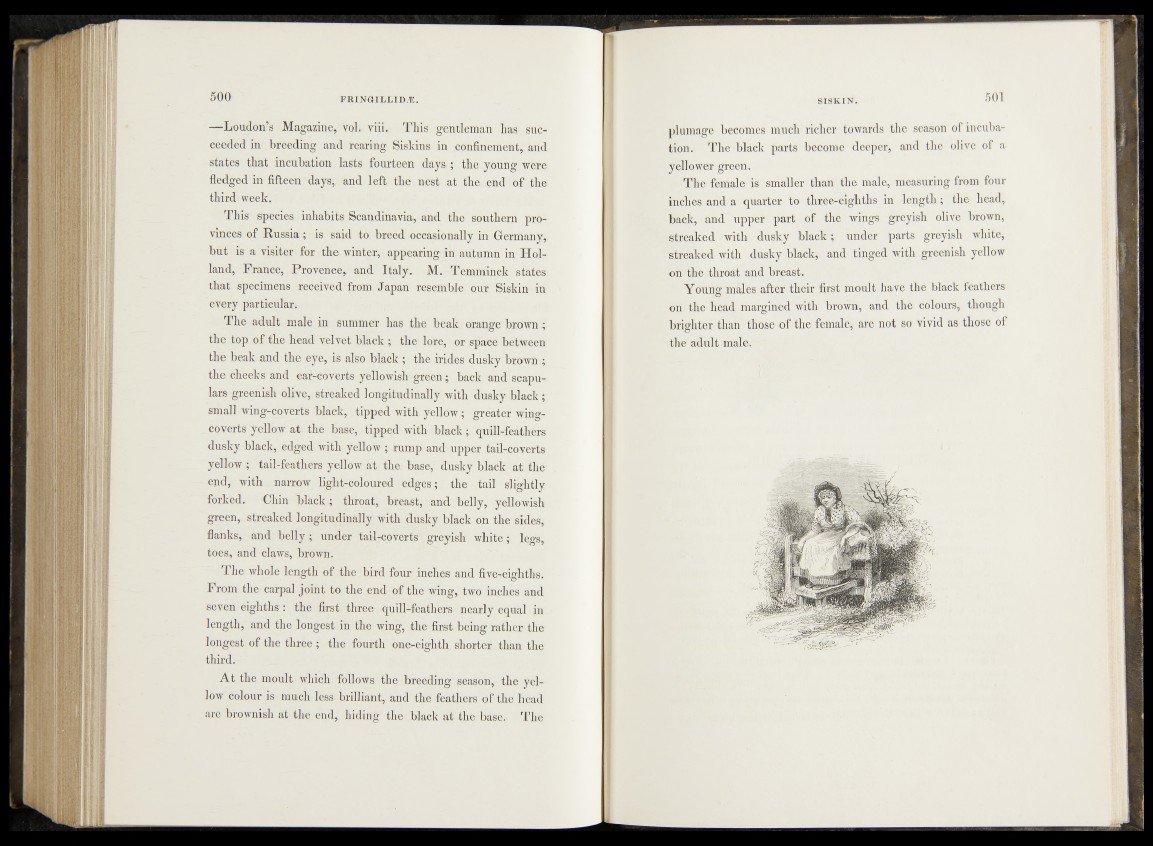
—Loudon’s Magazine, vol. viii. This gentleman has succeeded
in breeding and rearing Siskins in confinement, and
states that incubation lasts fourteen days ; the young were
fledged in fifteen days, and left the nest at the end of the
third week.
This species inhabits Scandinavia, and the southern provinces
of Russia; is said to breed occasionally in Germany,
but is a visiter for the winter, appearing in autumn in Holland,
France, Provence, and Italy. M. Temminck states
that specimens received from Japan resemble our Siskin in
every particular.
The adult male in summer has the beak orange brown ;
the top of the head velvet black ; the lore, or space between
the beak and the eye, is also black ; the irides dusky brown ;
the cheeks and ear-coverts yellowish green ; back and scapulars
greenish olive, streaked longitudinally with dusky black;
small wing-coverts black, tipped with yellow; greater wing-
coverts yellow at the base, tipped with black; quill-feathers
dusky black, edged with yellow ; rump and upper tail-coverts
yellow ; tail-feathers yellow at the base, dusky black at the
end, with narrow light-coloured edges; the tail slightly
forked. Chin black; throat, breast, and belly, yellowish
green, streaked longitudinally with dusky black on the sides,
flanks, and belly; under tail-coverts greyish white; legs,
toes, and claws, brown.
The whole length of the bird four inches and five-eighths.
From the carpal joint to the end of the wing, two inches and
seven eighths : the first three quill-feathers nearly equal in
length, and the longest in the wing, the first being rather the
longest of the three ; the fourth one-eighth shorter than the
third.
At the moult which follows the breeding season, the yellow
colour is much less brilliant, and the feathers of the head
are brownish at the end, hiding the black at the base. The
plumage becomes much richer towards the season of incubation.
The black parts become deeper, and the olive of a
yellower green.
The female is smaller than the male, measuring from four
inches and a quarter to three-eighths in length; the head,
back, and upper part of the wings greyish olive brown,
streaked with dusky black; under parts greyish white,
streaked with dusky black, and tinged with greenish yellow
on the throat and breast.
Young males after their first moult have the black feathers
on the head margined with brown, and the colours, though
brighter than those of the female, are not so vivid as those of
the adult male.